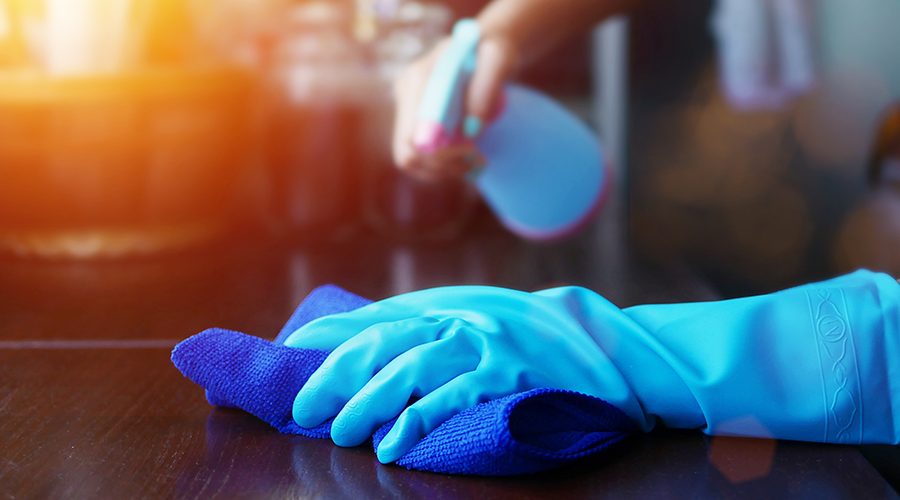The Centers for Disease Control and Prevention (CDC) inspects cruise ships for sanitation, but it does not inspect hospitals. In hospitals, a pathogen will persist in an appropriate environmental niche unless removed through hygienic cleaning. If abandoned, it can contaminate hands or be uplifted by air currents and deposited onto a patient or surfaces near the patient.
Hospitals once tested surfaces for bacteria, but in 1970, the CDC and the American Hospital Association advised them to stop, declaring testing was unnecessary and not cost effective. Methicillin-resistant Staphylococcus aureus (MRSA) infections since then have increased 50-fold, and numerous studies have linked unclean hospital equipment and rooms to infections.
Still, the CDC's latest guidelines deem routine testing for bacteria unnecessary. Their rationale is, “If you culture on a regular basis, you're always going to find something. You don't want the medical labs to be used for that instead of tests on patients."
One would think that a hospital accredited by the Joint Commission would be clean, but accreditation is no guarantee. State hospital inspectors investigating complaints from the public found that nearly one-fourth of hospitals where conditions were unsanitary had been inspected and accredited by the Joint Commission in the previous year.
At the hospital where I worked in 2014, we had a four-day triennial Joint Commission survey. In the debrief with the hospital leadership team, the Joint Commission survey team was highly complementary on the level of cleanliness in the hospital. In fact, one of the surveyors said, “I’ve surveyed hospitals that weren’t as clean as this one. When I retired to my hotel room at the end of the day after being around dirty surfaces, I prayed, ‘Lord, don’t let me get sick and have to go to that hospital.’”
A tough question
If we look at the current state of hospital cleanliness, what we need to ask ourselves is, "Why is cleanliness still such a problem?"
Patients and their visitors make comments about hospitals they consider dirty and associate these conditions with a general lack of care. The environment not only should be microbiologically safe. It also should be clean enough not to cause concern to patients.
Appearance can be dangerous because a surface could look fine but be contaminated with infection-causing pathogens. The unfortunate result is that cleanliness scores nationwide would barely earn a passing grade in school. At the same time, on May 3, 2023, patients saw this headline: “New Leapfrog Safety Grade Reveals Significant Increase in Healthcare-Associated Infections and Worsening Patient Experience During COVID-19 Pandemic” and other information making them hyper-aware of cleanliness.
Although simple answers are not easy to come by, environmental services (EVS) managers who continue to question performance and ask how their departments can do better will find the best path forward, absent the oversight of governmental or regulatory agency oversight. Monitoring does improve cleaning and reduce overall bioburden, but education and training along with EVS partner buy-in is critical as is the right products and processes.
Infection prevention is a complex puzzle but one we can solve together.
J. Darrel Hicks, BA, MESRE, CHESP, Certificate of Mastery in Infection Prevention, is the past president of the Healthcare Surfaces Institute. Hicks is nationally recognized as a subject matter expert in infection prevention and control as it relates to cleaning. He is the owner and principal of Safe, Clean and Disinfected. His enterprise specializes in B2B consulting, webinar presentations, seminars and facility consulting services related to cleaning and disinfection. He can be reached at darrel@darrelhicks.com, or learn more at www.darrelhicks.com.

 Hand, Foot and Mouth Disease on the Rise
Hand, Foot and Mouth Disease on the Rise BayCare Reveals Pagidipati Children's Hospital at St. Joseph's
BayCare Reveals Pagidipati Children's Hospital at St. Joseph's Preparing for the Hazards of Winter Weather
Preparing for the Hazards of Winter Weather Why Identity Governance Is Becoming a Facilities Management Issue
Why Identity Governance Is Becoming a Facilities Management Issue Habitat Health Opens South Los Angeles PACE Center
Habitat Health Opens South Los Angeles PACE Center